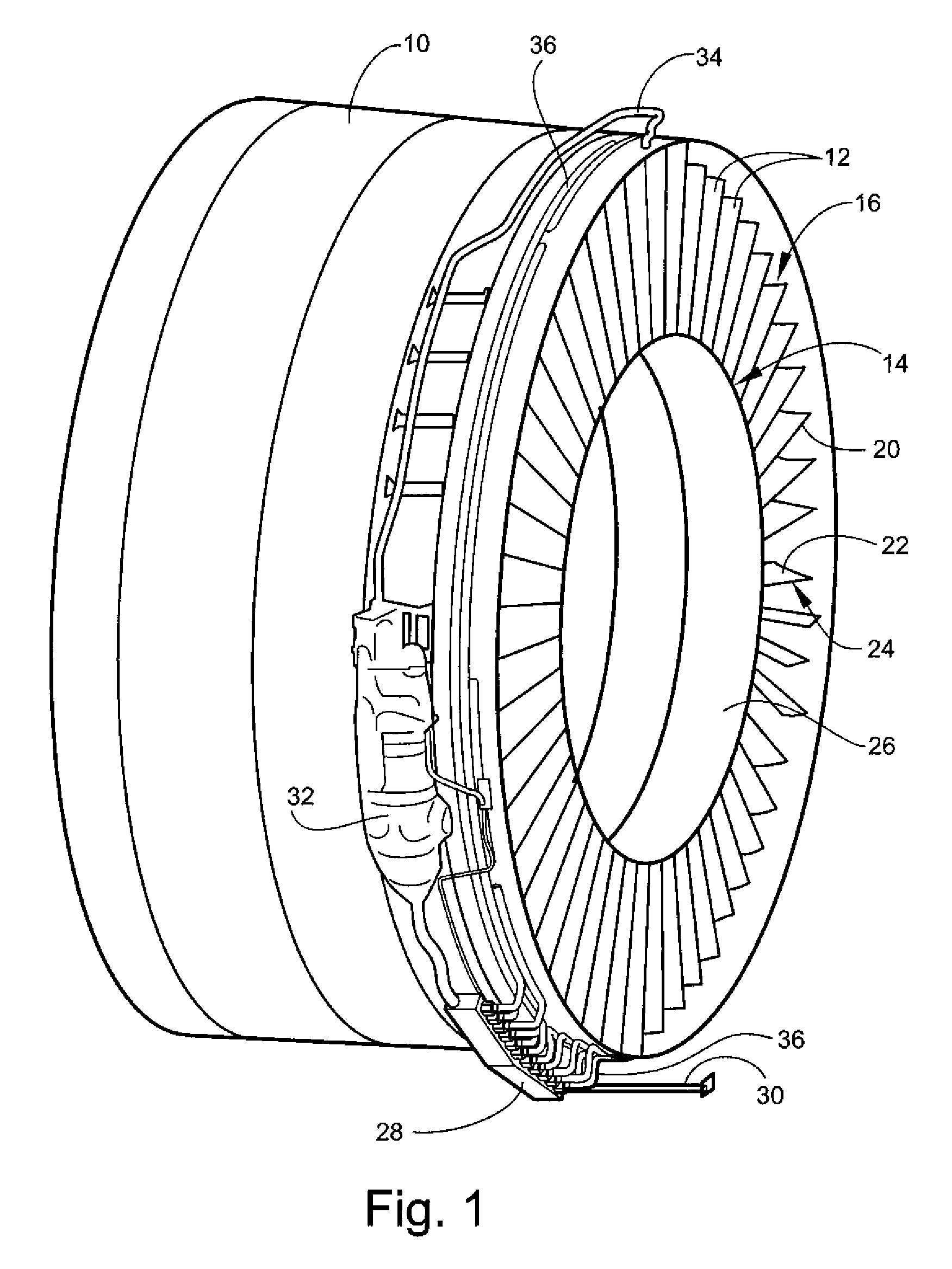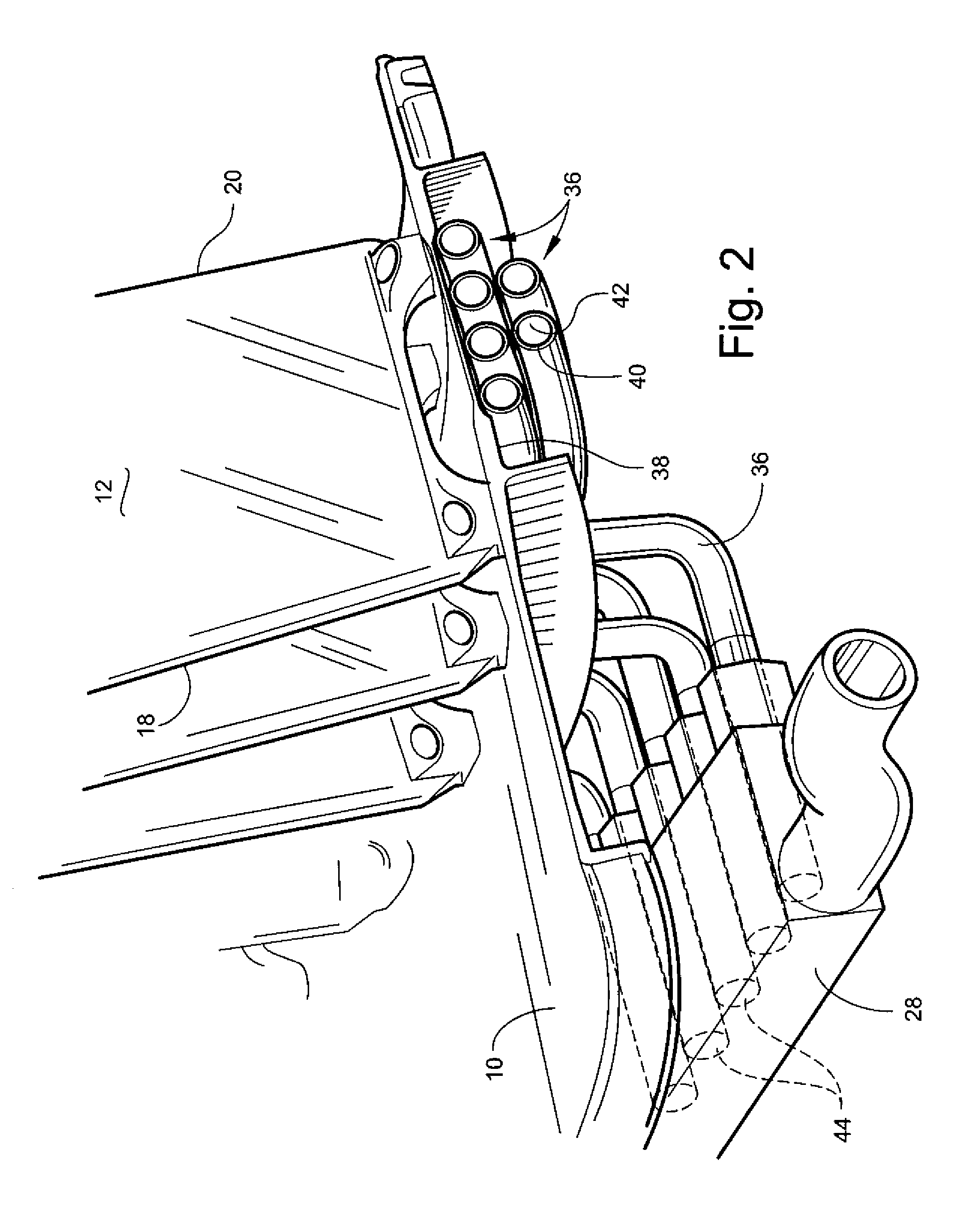Heat transfer system and method for turbine engine using heat pipes
- Summary
- Abstract
- Description
- Claims
- Application Information
AI Technical Summary
Benefits of technology
Problems solved by technology
Method used
Image
Examples
Embodiment Construction
[0014]Referring to the drawings wherein identical reference numerals denote the same elements throughout the various views, FIGS. 1-3 illustrate a portion of a fan module of a gas turbine engine, including an annular fan casing 10. A plurality of outlet guide vanes (OGVs) 12 are connected to and disposed within the fan casing 10. Each of the OGVs 12 (also shown in FIG. 2) has a root 14, a tip 16, a leading edge 18, a trailing edge 20, and opposed sides 22 and 24. The OGVs 12 are airfoil-shaped and are positioned and oriented to remove a tangential swirl component from the air flow exiting an upstream fan (not shown). In the illustrated example, the OGVs also serve as structural members (sometimes referred to as “fan struts”) which connect the fan casing to an inner housing 26. However, in other engine configurations, these functions may be served by separate components. The heat transfer system described herein is equally applicable to OGVs, fan struts, and all other types of genera...
PUM
| Property | Measurement | Unit |
|---|---|---|
| Temperature | aaaaa | aaaaa |
| Flow rate | aaaaa | aaaaa |
| Electrical conductor | aaaaa | aaaaa |
Abstract
Description
Claims
Application Information
 Login to View More
Login to View More - R&D
- Intellectual Property
- Life Sciences
- Materials
- Tech Scout
- Unparalleled Data Quality
- Higher Quality Content
- 60% Fewer Hallucinations
Browse by: Latest US Patents, China's latest patents, Technical Efficacy Thesaurus, Application Domain, Technology Topic, Popular Technical Reports.
© 2025 PatSnap. All rights reserved.Legal|Privacy policy|Modern Slavery Act Transparency Statement|Sitemap|About US| Contact US: help@patsnap.com



